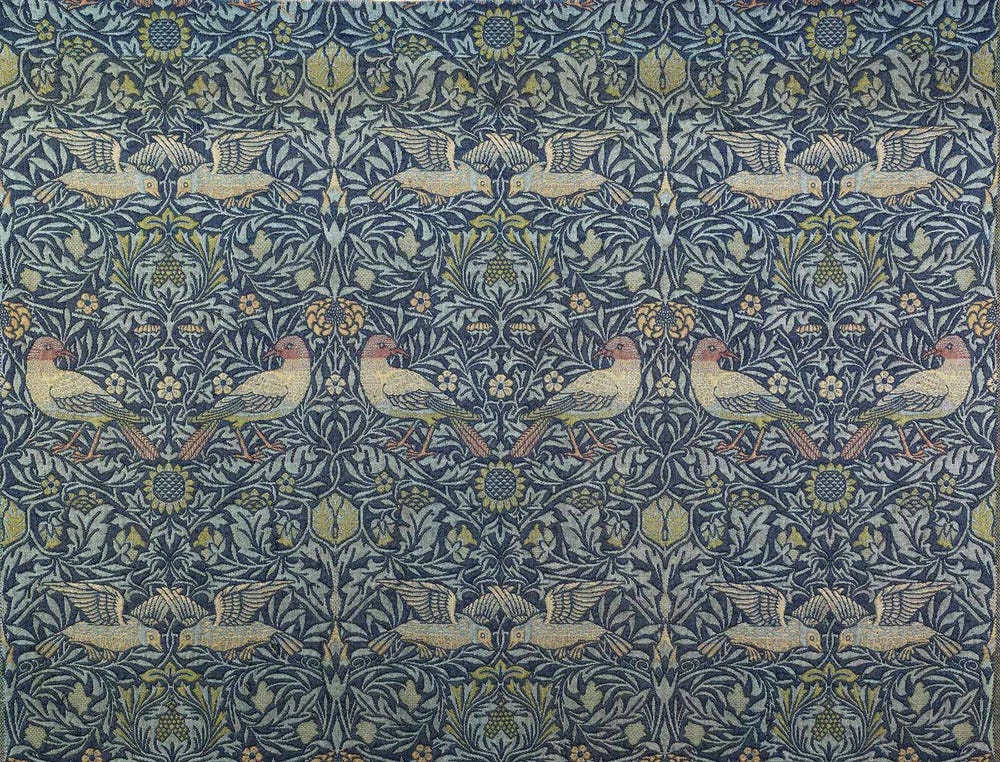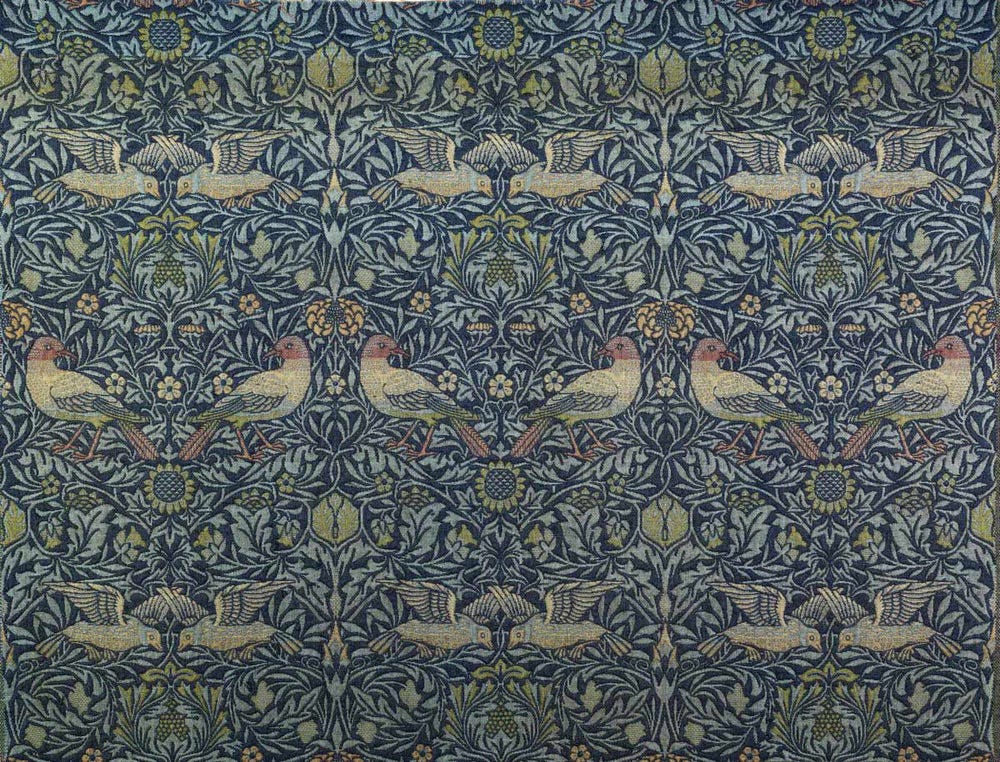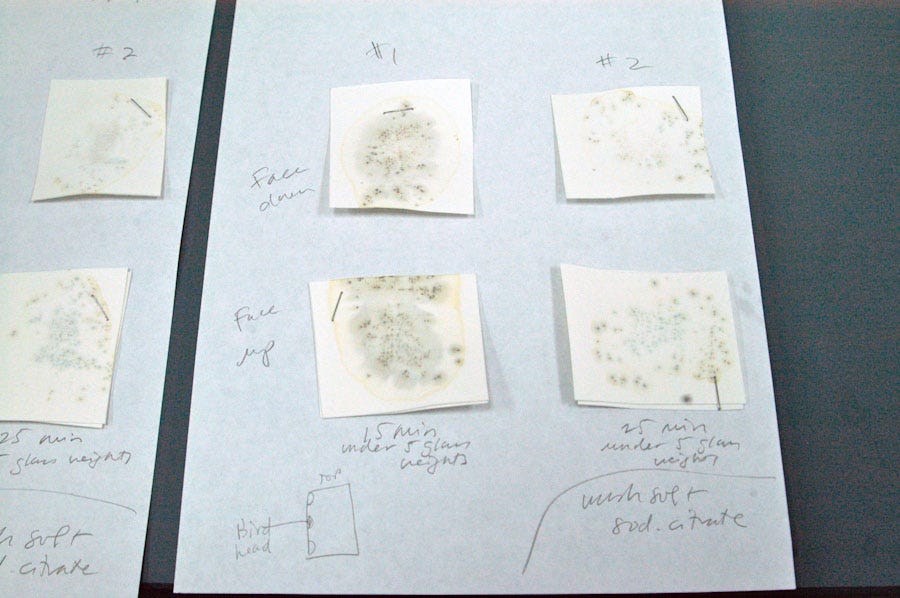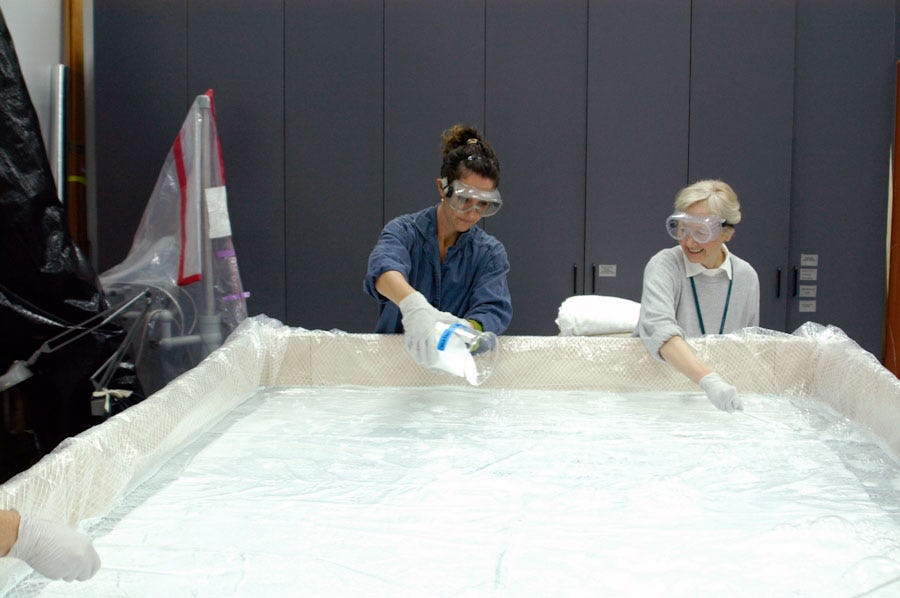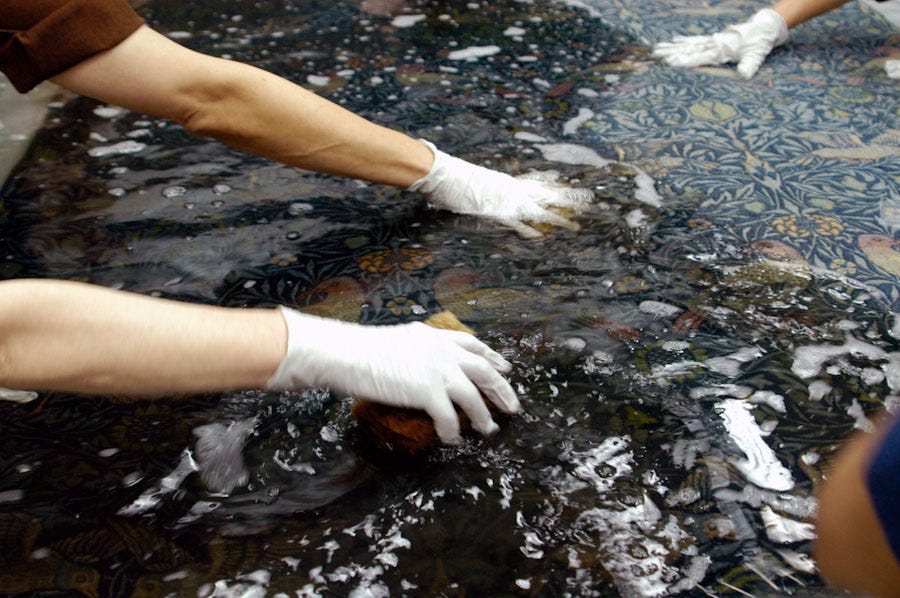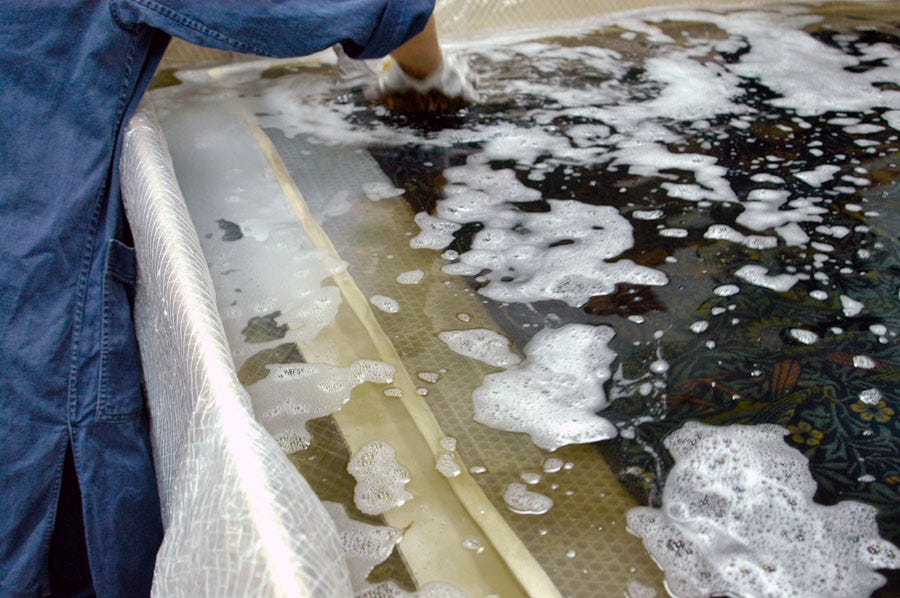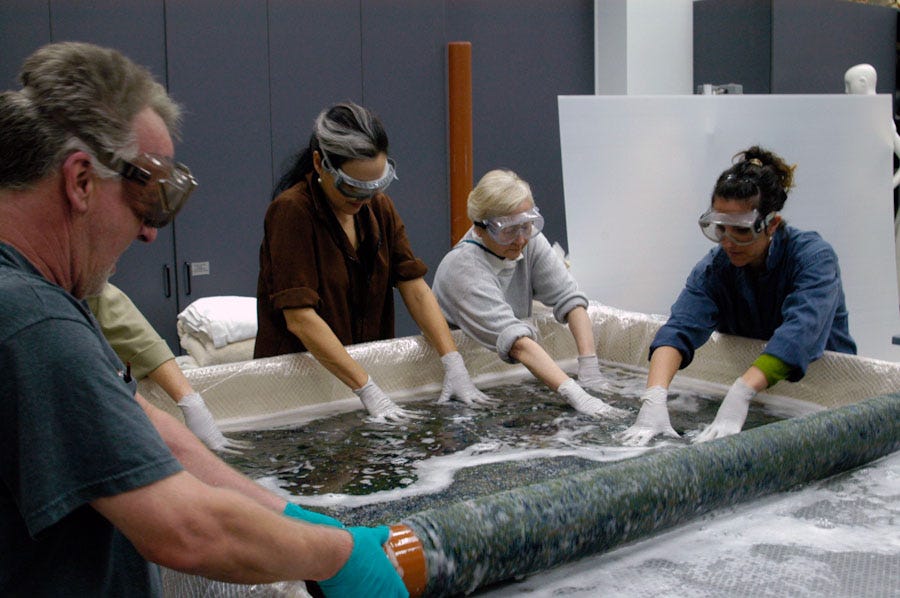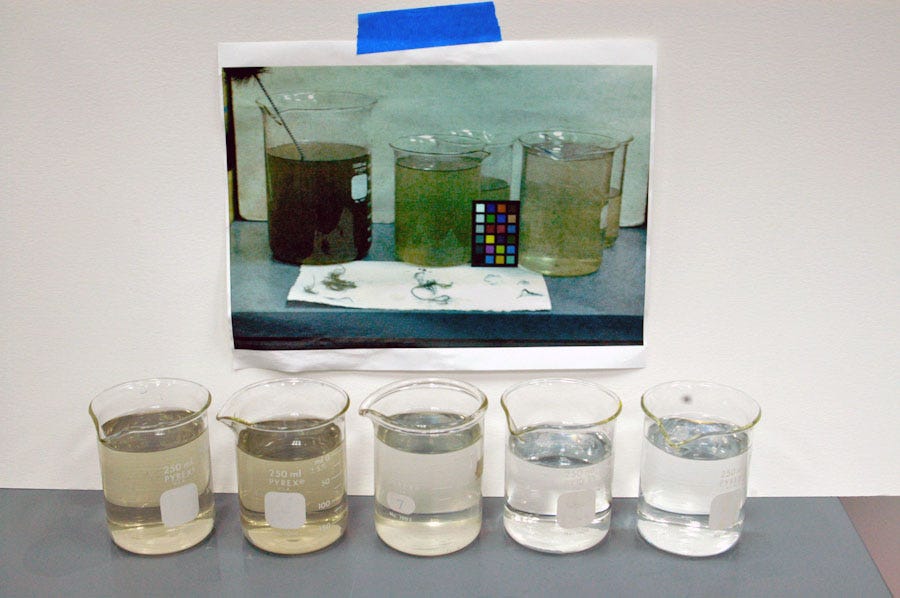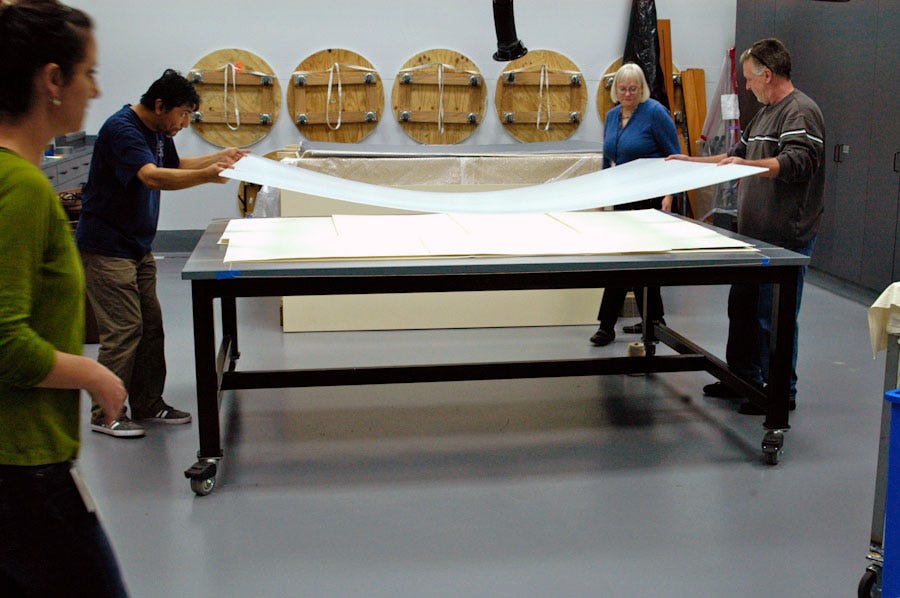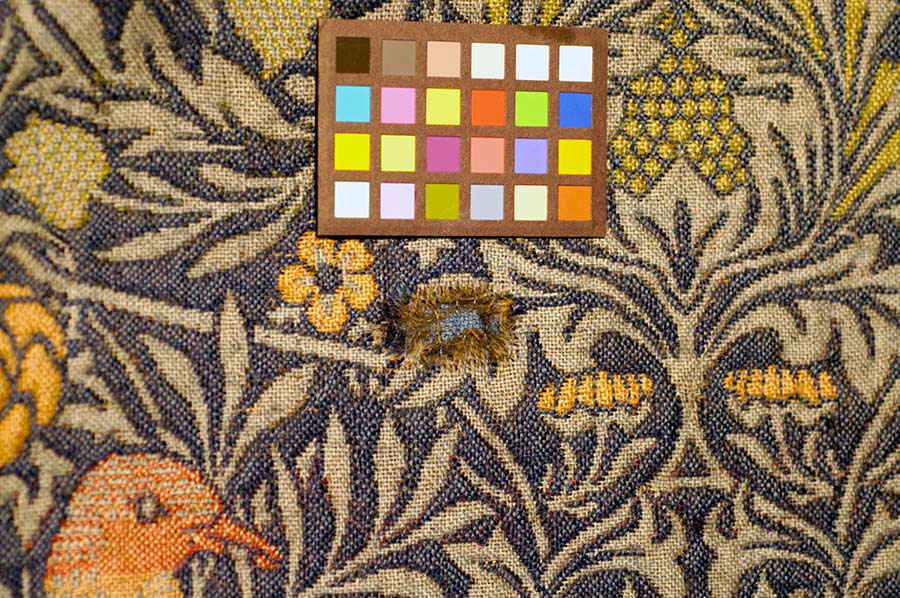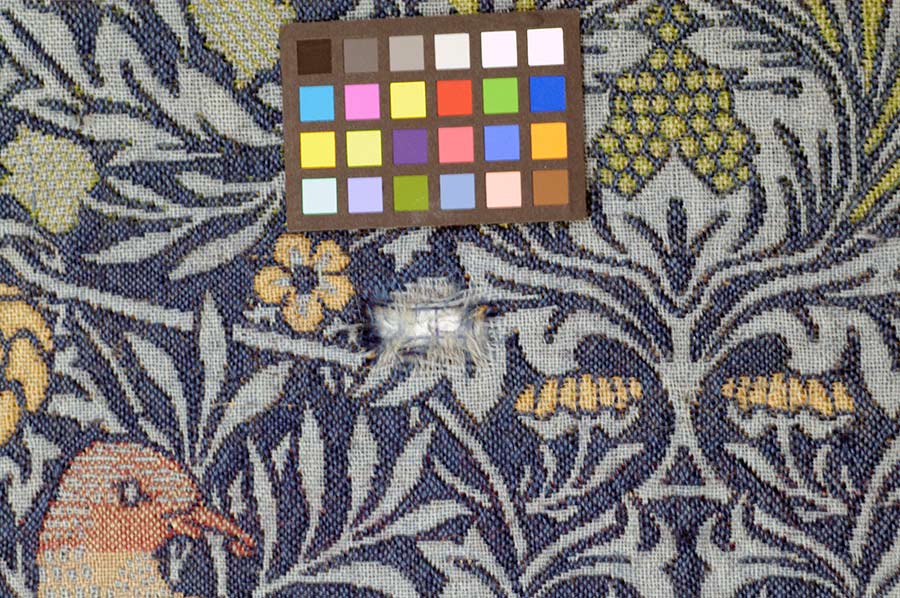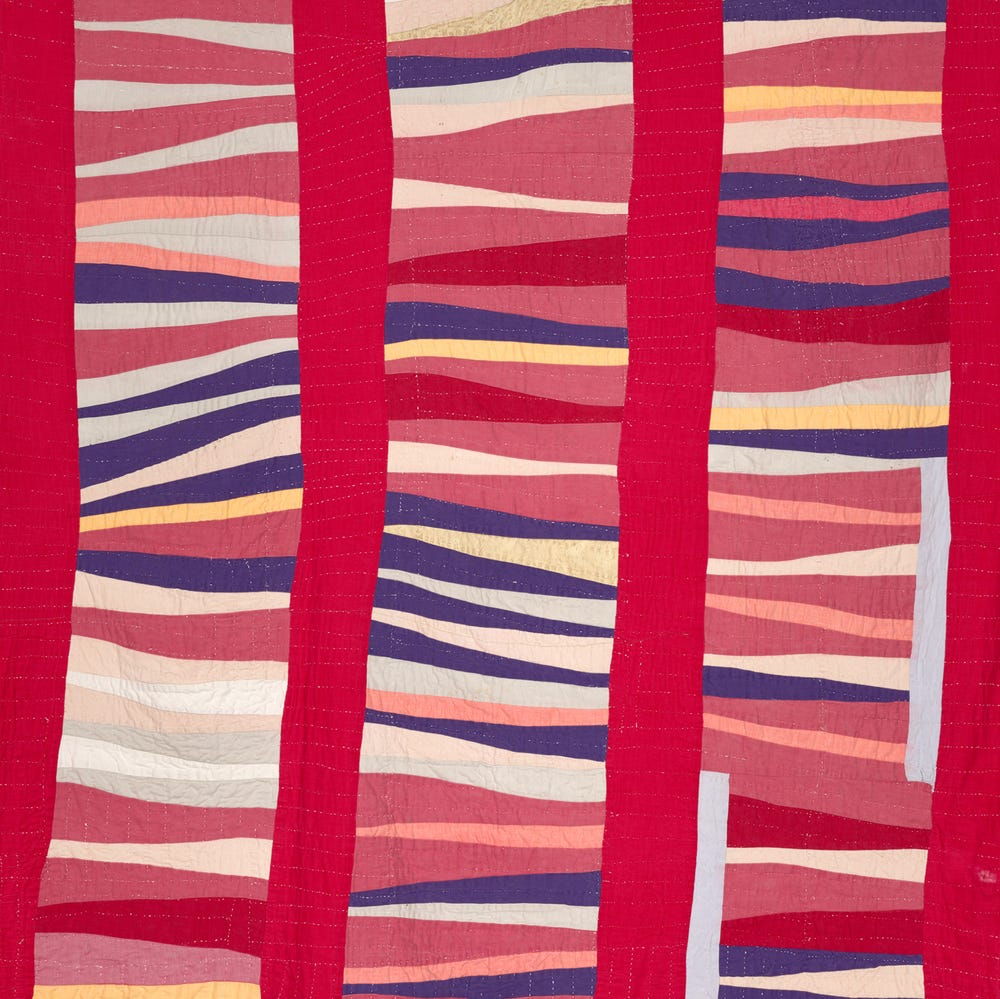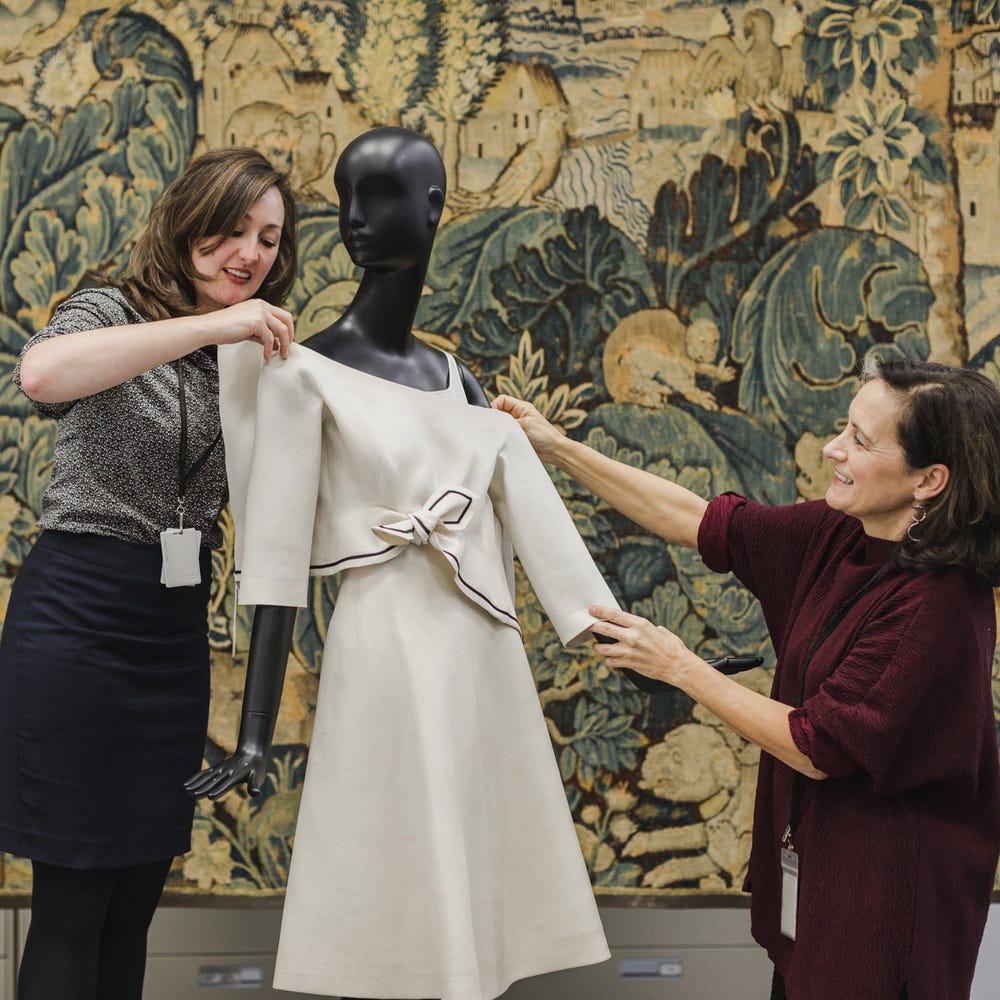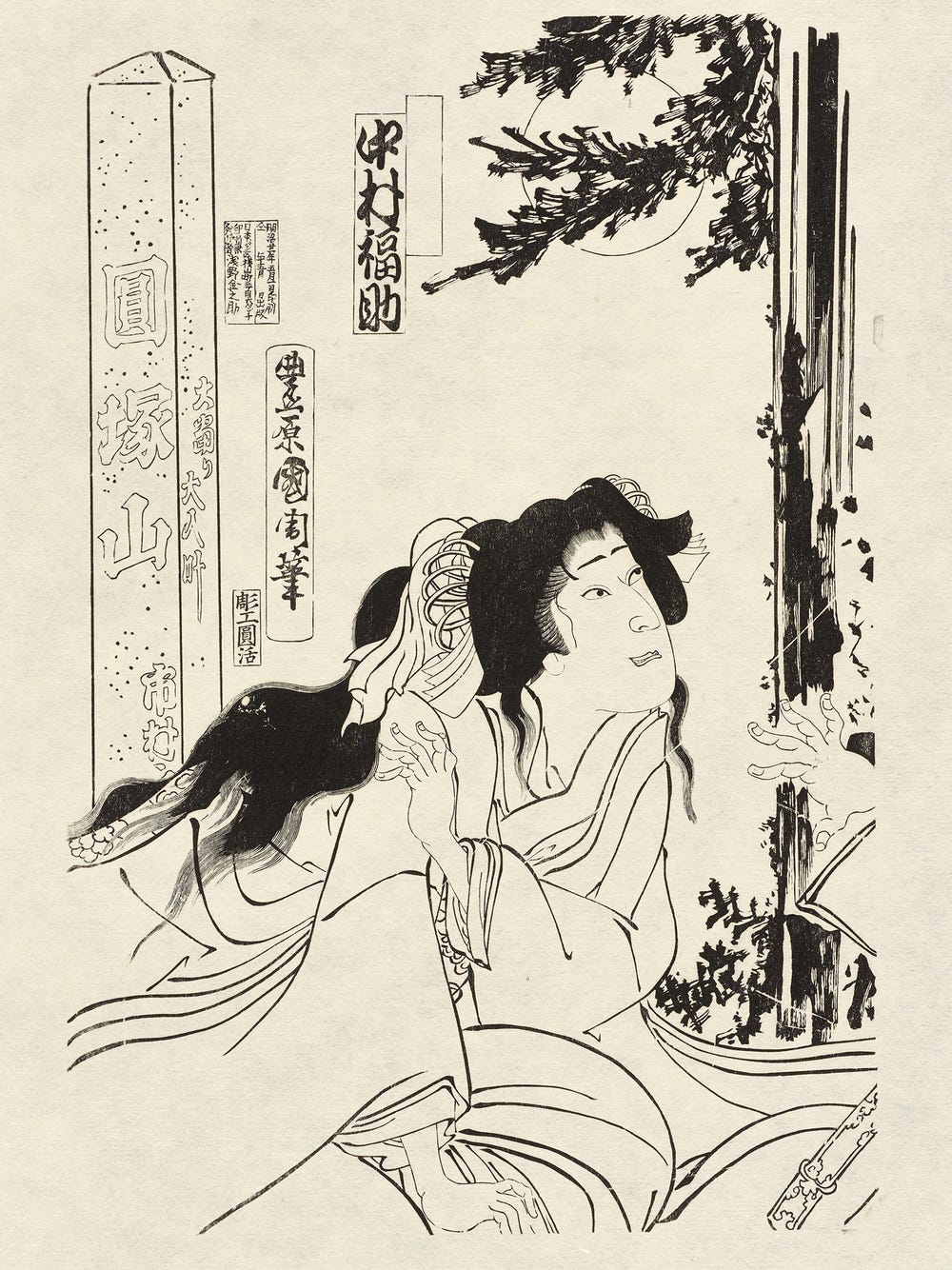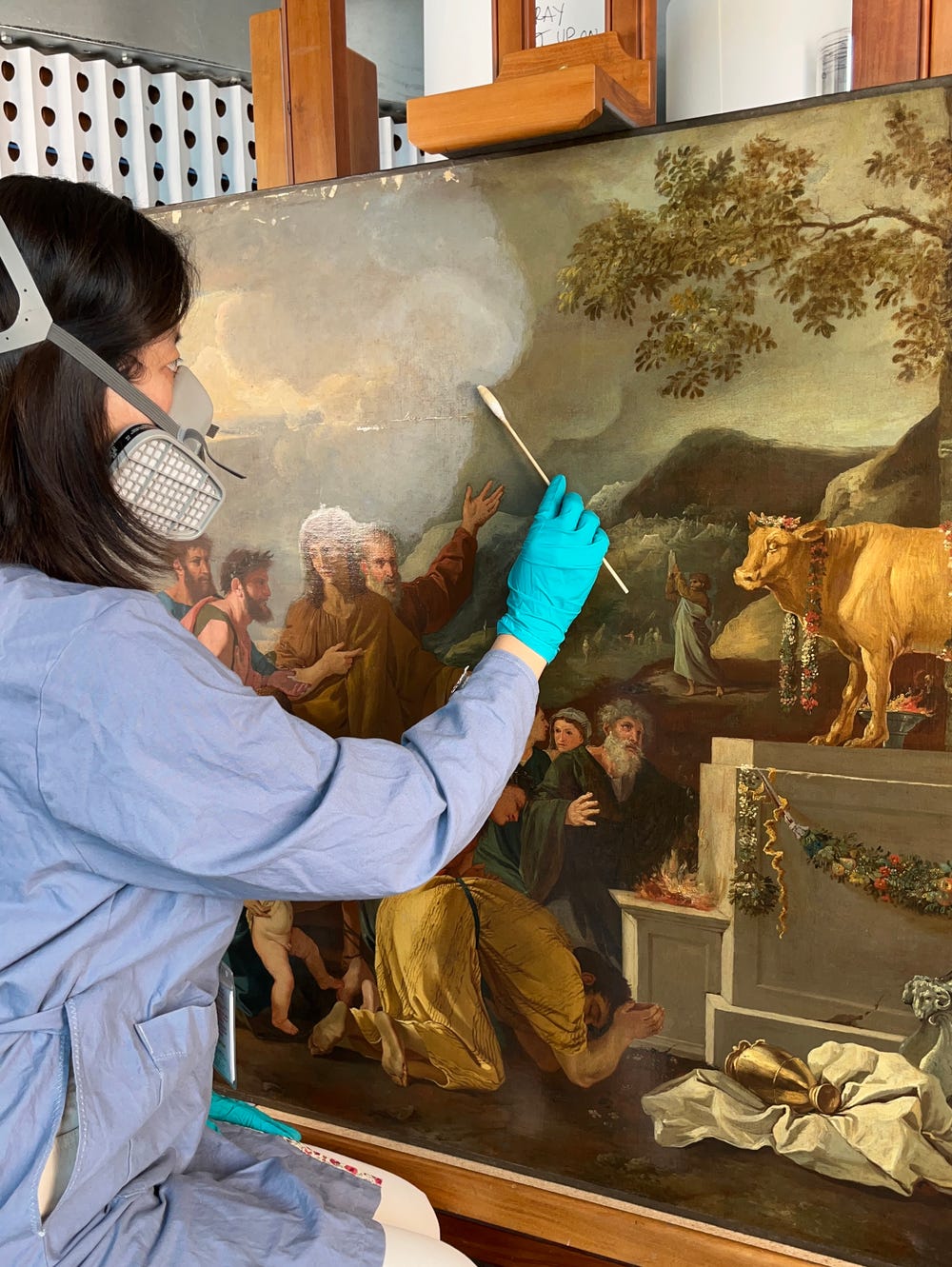The British Aesthetic Movement, the subject of the exhibition The Cult of Beauty: The Victorian Avant-Garde 1860 – 1900 at the Legion of Honor, promoted the integration of beauty and art into every aspect of life. William Morris (1834 – 1896) was a chief proponent of the Aesthetic Movement and contributed luxe designs for wallpaper, carpets, tiles, and furniture. His career as a textiles designer, however, quickly surpassed his involvement with all other areas of artistic production.
William Morris, Bird wall hanging (detail), 1878. Wool jacquard woven doublecloth. Museum purchase, Art Trust Fund. 1996.47
The exquisite Bird wall hanging, originally designed to hang in the drawing room of Morris’s Kelmscott House, was one of four patterns he designed during this period that featured birds. Acquired by the Museums in 1996, this textile has never before been exhibited. Prior to its debut in The Cult of Beauty, the hanging was bathed using a conservation process called aqueous wet cleaning.
Dye tests are required before any wet cleaning treatment to determine how much soil will be released and if the dyes will bleed. A dye fastness test is conducted by sandwiching a single area of soiled fabric between blotting paper. As you can see in the results below, the first test (on the left) released significant soiling while the second test (on the right) revealed color bleeding in the wool’s blue dye.
With these results and in consultation with guest conservator Yadin Larochette, head textiles conservator Sarah Gates was then able to determine the proper chemicals to use in the wash bath solution.
When a textile is washed, the soils and dyes released into the bath can increase the wash solution’s acidity, potentially damaging the fabric. Added chemicals act as a buffer, mitigating this effect by maintaining a low pH in the solution. Larochette and veteran textiles lab volunteer Barbara Arthur added these cleaning ingredients to the wash bath. (The table on which the bath would be placed had to be fortified, because the estimated weight of the bath was approximately 1,300 pounds!)
Next, the textile was placed into the wash solution; the unsubmerged area can be seen below in the upper right corner.
The yellow-brown soil released in the bath was visible almost immediately. Sponges were used to gently push the wash solution through the textile for a more thorough cleaning.
Once the initial bath was completed, the textile was carefully rolled up and turned over so that the reverse side could be sponged in a second bath of wash solution. A wool doublecloth of this size is quite heavy when wet, and it required several people to handle.
Gates reserved examples of the soiling removed during the treatment. The top row displays three beakers of soil solution that were removed from the wash using a low suction vacuum — this process was repeated three times, each time resulting in less soil removal. The bottom row shows five beakers of the wash and rinse solution from the wet cleaning treatment.
After a two-hour submersion in the bath, the textile was quickly blotted dry with terry toweling before being transferred to a nearby table. For the next hour, the entire textile was sandwiched between weighted blotting paper in order to control any bleeding of the blue areas. This process was carefully monitored and — with the assistance of many, including veteran textiles lab volunteer Barbara Nitzberg and art technicians Robert Haycock and Oswaldo Ruiz — the blotting papers were switched out three times within the hour.
The textile was then left overnight to dry completely with air circulating above and below the fabric. The results were dramatic.
Before:
After:
